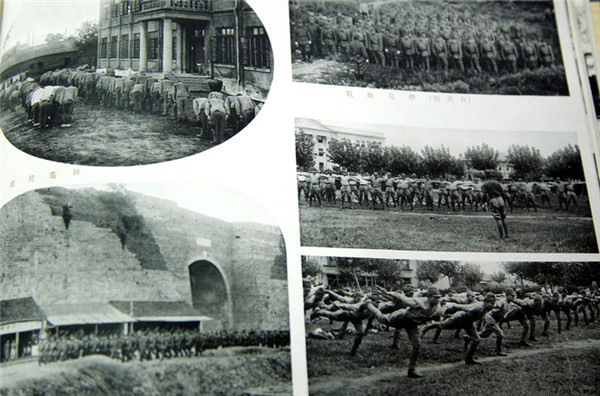
Photos taken by a Japanese soldier in Nanjing in 1937. (China Daily)
'Comfort women'
In 2005, Wu paid 5,000 yuan ($755) for a packaged condom previously owned by a Japanese collector. Printed on the simple kraft paper packaging is the brand name, just below a star-the emblem of the Imperial Japanese Army. The packaging of the accompanying disinfectant cream states that it was manufactured by a Japanese army supply factory.
"This sheds light on the notorious 'comfort women' system the Japanese military consistently installed in almost all the areas of Asia it occupied," he said.
According to estimates by Chinese scholars, approximately 360,000 women in the region were forced into sexual slavery, most notably in China, Korea and the Philippines. Abducted from their homes, they were thrown into "comfort stations", in which many of them died.
The survivors lived with the pain for the rest of their lives.
"The stigma, often self-imposed, was such that very few of them spoke openly about their experience later," Wu said. "Nanjing is very special because it was here that the Japanese occupying authorities began to install the evil system on a large scale, after its introduction in Shanghai".
Research has shown that there were at least 30 'comfort stations' in the city, but only one woman agreed to speak to the museum's oral history archive.
She gave Wu a small lump of potassium permanganate, an inorganic chemical compound often used as a disinfectant and to prevent inflammation.
She and the other comfort women were given the compound to wash themselves after sex, so "we would continually serve them", as she described it.
"She gave me this in 2006, a year before her death," Wu said.
Some pain refuses to be dulled, especially when reminders abound. "When I was little, age about 8 or 9, my grandfather took me for a weekly shower at a public bath. To get there, we passed the Hanzhongmen Bridge that crosses the Qinhuai River, a waterway long embedded in Nanjing's cultural history," Wu said.


















































